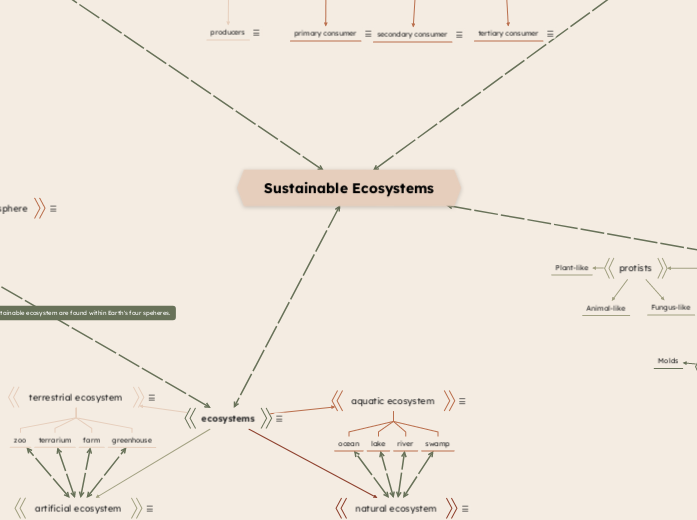Sustainable Ecosystems
abiotic characteristics
Water
Oxygen
Light
Nutrients
Soil
biotic
predation
Owls and Mice
Lions and Gazelles
Sharks and Seals
parasitism
Lice and Humans
Tapeworms and Cows
Ticks and Dogs
competition
Lion prides
Plants
Humans
mutualism
Coral and Fish
Bees and Flowers
Oxpeckers and Rhinos
commensalism
Remoras and Sharks
Frogs and Plants
Cactus and Cactus Wren
communities
animals
Mamals
Birds
Reptiles
Amphibians
Insects
plants
Shrub
Herbs
Trees
Climbers
Creepers
bacteria
Cocci
Bacilli
Spirilla
Vibrios
Spirochetes
protists
Plant-like
Animal-like
Fungus-like
fungus
Molds
Mushrooms
Yeast
ecosystems
terrestrial ecosystem
zoo
terrarium
farm
greenhouse
aquatic ecosystem
ocean
lake
river
swamp
natural ecosystem
artificial ecosystem
Nutrient Cycling
Energy Transfer
Earths Four Spheres
lithosphere
hydrosphere
atmosphere
biosphere
Trophic Levels
autotroph
first trophic level
producers
heterotroph
second trophic level
primary consumer
third trophic level
secondary consumer
fourth trophic level
tertiary consumer
